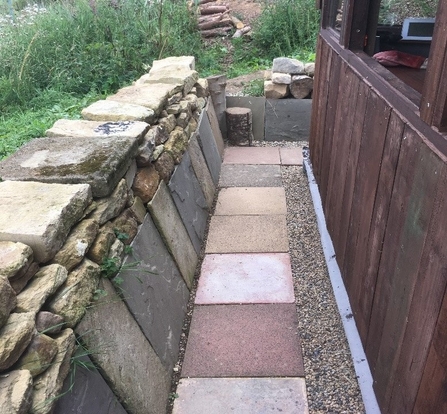A wise person once wrote ‘Men build too many walls and not enough bridges’ and this is certainly true for me. On the reserve I have built four walls and only one bridge. I am a big fan of dry stone walls, they make great habitat for many animals but also make great focal points for observing wildlife at close quarters.
The walls I have made have a slightly different construction to a traditional dry stone wall. Normally you have two parallel walls of stone filled in between with rubble and then a capping stone on top. This gives the wall a very sturdy construction. Our construction has minimum infill with rubble so the wall has lots of voids and chambers which are ideal for rodent occupancy. We also included clay field drain pipes and drilled logs (particularly for solitary bees) as additional habitat.










